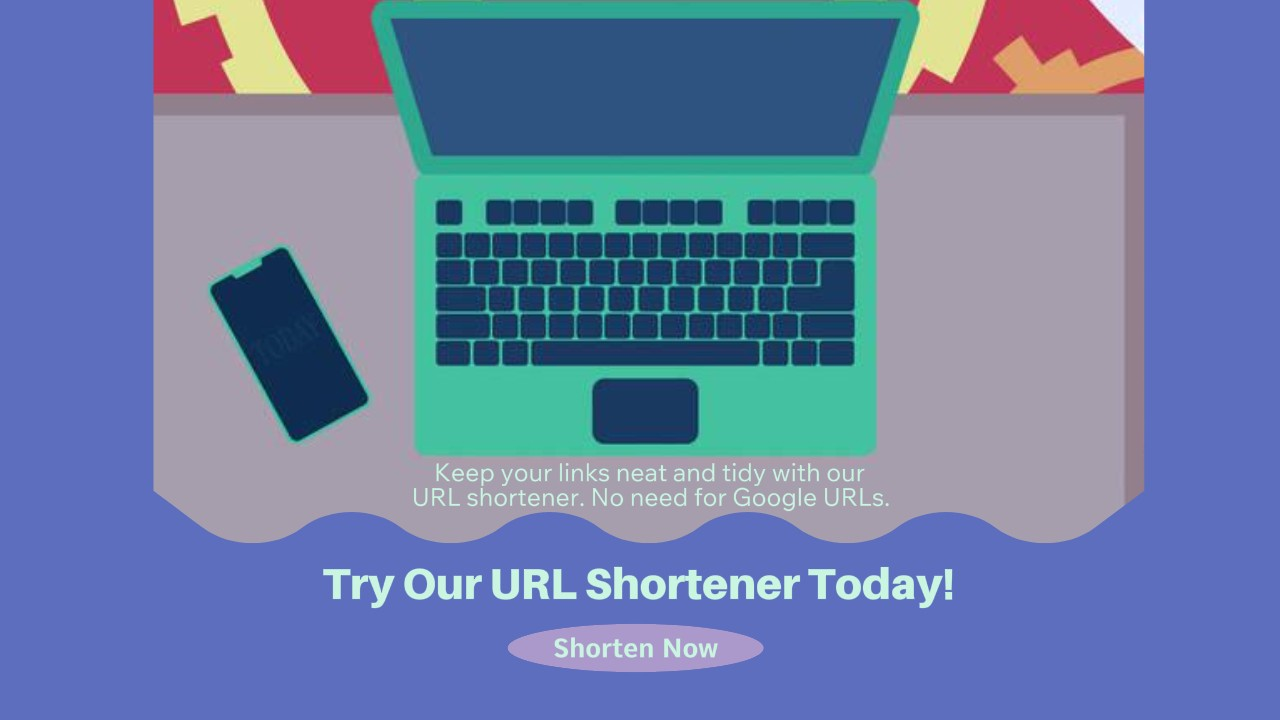How Does a Link Shortener Work?
In this article, we'll explore about How Does a Link Shortener Work? In today’s fast-paced digital world, link shorteners have become essential tools for individuals and businesses alike. They simplify sharing long URLs, improve aesthetics, and provide valuable analytics. This article will dive deep into the mechanics of link shorteners, explore their benefits, and examine their diverse applications.
1. The Basics of Link Shortening
A link shortener transforms a long, cumbersome URL into a more manageable, short link. For instance, a lengthy URL like https://www.example.com/articles/2023/07/how-to-use-link-shorteners can be shortened to https://urlty.co/abc123. The primary goal is to reduce the character count, making the link more user-friendly and easier to share, especially on platforms with character limitations like Twitter.
2. The Technical Process of Link Shortening
The process of shortening a link involves several steps:
- Input URL: The user submits a long URL to the link shortener service.
- Generate Short URL: The service generates a unique code, often a combination of alphanumeric characters.
- Store Mapping: The service stores the mapping between the original URL and the generated code in its database.
- Provide Short URL: The service provides the user with the shortened URL, which redirects to the original URL when clicked.
The key component here is the unique code, which acts as a reference to the original URL stored in the database. This process involves several technical components:
- Database: The backend database stores the original URLs and their corresponding short codes.
- Hashing Algorithm: Often used to generate the unique short code. Hashing algorithms convert input (the long URL) into a fixed-length string of characters, ensuring uniqueness and minimizing collisions.
- Redirect Mechanism: When a user clicks on the short URL, the service retrieves the original URL from the database and performs a redirect.
3. Redirect Mechanisms
Redirection is a critical aspect of how link shorteners work. The types of HTTP status codes used in redirection include:
- 301 Moved Permanently: This status code indicates that the original URL has been permanently moved to a new location. It is beneficial for SEO as search engines pass link equity from the short URL to the original URL.
- 302 Found: This status code indicates a temporary redirection. It is used when the original URL might change in the future.
- 307 Temporary Redirect: Similar to 302 but maintains the request method (GET, POST, etc.).
- 303 See Other: Redirects with a GET request to retrieve the resource.
Link shorteners typically use 301 or 302 redirects to ensure users reach their intended destination seamlessly.
4. Benefits of Using Link Shorteners
Link shorteners offer numerous advantages, including:
- Aesthetics: Shortened links are cleaner and more visually appealing, making them ideal for sharing on social media and in marketing materials.
- Tracking and Analytics: Many link shorteners provide detailed analytics, such as the number of clicks, geographic location of users, and the referral source. This data is invaluable for marketers and content creators.
- Link Management: Shortened links are easier to manage and organize, especially when dealing with multiple campaigns or projects.
- Branding: Custom short links, such as those provided by URLty.co, allow businesses to incorporate their brand name into the URL, enhancing brand visibility and credibility.
5. Use Cases for Link Shorteners
Link shorteners are versatile tools used in various scenarios:
- Social Media Marketing: Shortened links fit well within character limits and provide analytics for tracking campaign performance.
- Email Marketing: They make links more attractive and less likely to break in email clients.
- Content Sharing: Bloggers and influencers use short links to share content and track engagement.
- Affiliate Marketing: Short links help in tracking clicks and conversions from affiliate links.
- Print Media: Shortened links are easier to include in printed materials like flyers, brochures, and business cards.
6. Security and Reliability
Security is a critical aspect of link shortening services. Reputable providers implement several measures to ensure the safety and reliability of their services:
- Link Validation: Ensuring that the destination URL is legitimate and not associated with malicious content.
- SSL Encryption: Protecting data in transit with SSL/TLS encryption, which secures the shortened URL from tampering and ensures user privacy.
- Spam and Phishing Protection: Detecting and preventing the creation of links that lead to spam or phishing sites. This can involve automated systems that scan destination URLs for known threats and human review processes for suspicious activity.
- Rate Limiting: Preventing abuse by limiting the number of links a single user can create in a given period.
7. Customization and Branding
One of the significant advantages of using a link shortener is the ability to customize and brand your links. Custom short links enhance brand recognition and trust. For example, instead of a generic short URL, you could have something like https://urlty.co/mybrand-offer.
Custom links are particularly beneficial for businesses as they provide an additional touchpoint for brand interaction and can be tailored to fit specific campaigns or products. This customization can include branded domains, custom slugs (the part of the URL that comes after the domain), and even QR codes for offline sharing.
8. Advanced Features
Modern link shorteners offer a range of advanced features to enhance their functionality:
- A/B Testing: Comparing different versions of a link to see which performs better. This is useful for marketers who want to test different calls to action or landing pages.
- Geotargeting: Redirecting users to different destinations based on their geographic location. For instance, users from the US might be directed to one page, while users from Europe are sent to another.
- Device Targeting: Redirecting users to different URLs based on their device type (e.g., mobile, desktop). This ensures that users have an optimal experience regardless of the device they are using.
- Expiration Dates: Setting links to expire after a certain period or number of clicks. This is useful for time-sensitive promotions or limited-time offers.
- Password Protection: Adding an extra layer of security by requiring a password to access the destination URL.
- Deep Linking: Directing users to specific content within an app, rather than just the app’s homepage.
These features allow businesses to optimize their marketing strategies and improve user experience.
9. The Future of Link Shortening
The future of link shortening lies in further integration with marketing and analytics tools. As the digital landscape evolves, link shorteners will continue to play a crucial role in online marketing and user engagement. Innovations may include:
- AI and Machine Learning: Enhancing link performance predictions and automated A/B testing. AI could analyze vast amounts of data to determine the best time to share a link, the most effective wording, or the optimal target audience.
- Blockchain: Improving transparency and security in link management. Blockchain technology could be used to create immutable records of link creation and usage, providing an additional layer of trust and accountability.
- Deeper Analytics: Providing more granular data on user behavior and engagement. Future link shorteners might offer insights into user intent, conversion rates, and even post-click behavior, such as time spent on the destination page.
In conclusion, link shorteners are powerful tools that offer significant benefits in terms of aesthetics, tracking, management, and branding. By understanding how they work and leveraging their advanced features, businesses and individuals can enhance their online presence and optimize their digital marketing efforts. URLty.co is an example of a modern link shortener service that provides these capabilities, helping users to manage and track their links effectively.
Whether you are a marketer looking to track campaign performance, a business wanting to enhance your brand visibility, or an individual aiming to share content more efficiently, link shorteners offer a versatile solution. Embrace the power of link shorteners and unlock their full potential for your digital strategy.



